So what are fermented foods? I get this question all the time and I am going to provide the answer in three different posts. This one will help you understand what are fermented foods in general and then I will follow up with a post explaining in detail with recipes on how to make your own fermented foods: sauerkraut, other fermented vegetables and condiments and kefir.
So what are fermented foods?
The short answer is pretty simple and quite funny – according to Sandor Katz, author of The Art of Fermentation, fermented foods are “the flavorful space between fresh and rotten.” That doesn’t sound very tasty does it? But take note, most highly prized gourmet foods are fermented ones because the process of fermentation creates very strong flavors.
The process of fermenting foods isn’t a new one: Evidence indicates that early civilizations were making wine and beer between 7,000 and 8,000 years ago — and bread even before that. If you think about it – most cultures have their own version of fermented cabbage or sauerkraut – European sauerkraut, Korean Kimchi, Latin Cortido and the list goes on and on.
These people developed these techniques out of necessity to preserve their foods for long periods of time without the use of refrigeration or canning methods. This process is actually called ‘lacto-fermentation’. According to the Nourishing Traditions cookbook, “lactic acid is a natural preservative that inhibits putrefying bacteria. Starches and sugars in vegetables and fruits are converted to lactic acid by the many species of lactic-acid-producing bacteria or lactobacilli.”
What are fermented foods benefits?
The fermentation of dairy products and the preservation of vegetables and fruits actually have benefits beyond simple preservation. The proliferation of lactobacilli in fermented foods enhances their digestibility and increases vitamin levels. Numerous helpful enzymes are produced as well as antibiotic and anticarcenogenic substances. These bacteria promote the growth of healthy bacteria or flora throughout our intestines. Again according to Sandor Katz, “Bacteria in our gut enable us to live. We could not survive without bacteria. … They allow us to digest food, to assimilate the nutrients in our food; and they play a huge role, just beginning to be understood, in our immune functioning and in many other processes in our bodies. All life has evolved from bacteria and no other form of life has lived without bacteria. … Our bacteria perform all sorts of essential functions for us, and because we are continually attacking them effectively with all of these chemicals in our lives, simply replenishing and diversifying these populations has a benefit for us.”
Lactobacillus
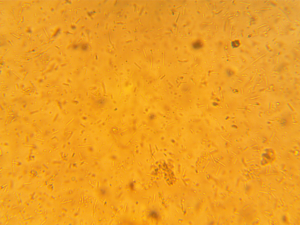 Recent research called the Human Microbiome Project being done at the same scale as the Human Genome Project is telling us more and more about how we co-exist (and frankly would not exist) without bacteria living in our bodies. The study has discovered “more strains than they had ever imagined — as many as a thousand bacterial strains on each person. And each person’s collection of microbes, the microbiome, was different from the next person’s. To the scientists’ surprise, they also found genetic signatures of disease-causing bacteria lurking in everyone’s microbiome. But instead of making people ill, or even infectious, these disease-causing microbes simply live peacefully among their neighbors.” The work also helps establish criteria for a healthy microbiome, which can help in studies of how antibiotics perturb a person’s microbiome and how long it takes the microbiome to recover. So what are fermented foods affects on the microbiome? This type of research tells us that eating fermented foods keeps our bodies and our immune systems fine tuned and healthy.
Recent research called the Human Microbiome Project being done at the same scale as the Human Genome Project is telling us more and more about how we co-exist (and frankly would not exist) without bacteria living in our bodies. The study has discovered “more strains than they had ever imagined — as many as a thousand bacterial strains on each person. And each person’s collection of microbes, the microbiome, was different from the next person’s. To the scientists’ surprise, they also found genetic signatures of disease-causing bacteria lurking in everyone’s microbiome. But instead of making people ill, or even infectious, these disease-causing microbes simply live peacefully among their neighbors.” The work also helps establish criteria for a healthy microbiome, which can help in studies of how antibiotics perturb a person’s microbiome and how long it takes the microbiome to recover. So what are fermented foods affects on the microbiome? This type of research tells us that eating fermented foods keeps our bodies and our immune systems fine tuned and healthy.
It also tells us that we need many different types of bacteria to keep our microbiomes healthy. You have probably already been hearing about the benefits of probiotics and many food products claim to have probiotics in them. You have also probably taken a probiotic pill before. While there might be some benefit (vs. doing nothing at all) to eating these types of products, they only cover a very small slice of the types of health promoting bacteria in our microbiomes. They are not the varied types of bacteria you can produce in lacto-fermentation. Scientists have even started naming these varied types of probiotics after the food they exclusively exist in – take for example kimchi – scientists named the bacteria found in kimchi – lactobacillus kimchii.
Kimchii
- What are fermented foods? Kimchii http://homemademommy.net
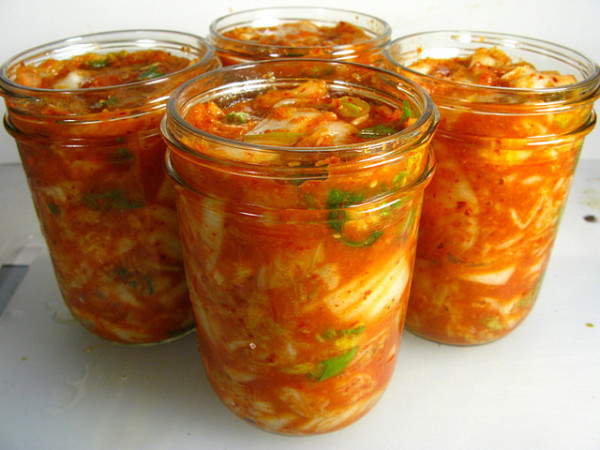
What are the dangers of not eating fermented foods?
Without these enzymes and bacteria we are basically eating ‘dead food’. Making fermented foods is an artisanal craft and results can be inconsistent – this doesn’t jive well with industrial food where food products are created on a massive scale and need to be uniform. We have had many decades where this craft is being lost and people are taking antibiotics and totally messing up their intestinal gut flora. I personally struggled for many years with what doctors told me was IBS (Irritable Bowel Syndrome) which is one of those ‘syndromes’ that doctors name when they have no idea why you have symptoms and they have no drugs to help your symptoms. I also have had asthma since I was a child and recurrent sinus infections. What are fermented foods doing for my body? Since I have added fermented foods back into my diet in hefty amounts, I have seen my asthma and allergies and constant post nasal drip disappear and I no longer am plagued by stomach issues. I believe by not eating fermented foods and by killing off good bacteria in my body through antibiotic use, I was allowing much worse bacteria to proliferate causing my personal microbiome to get out of balance.
What are fermented foods flavor profiles?
All of the science aside, I see another really amazing benefit of perfecting your own craft of making fermented foods at home. One of my new favorite cookbooks is The Flavor Bible. It is basically a ‘foodie’ chef handbook on which kinds of flavors go together well – it isn’t a book a recipes – it is a book that allows for individual creativity in creating flavor profiles. According to the book, we technically have only four (or five depending on who you ask) flavor profiles: salty, sweet, sour, bitter and a recent addition to the list, umami (savoriness – think anchovies, blue cheese, or rich broth). We all know about salty, sweet and bitter foods. But when was the last time you thought about sour foods? What comes to my mind when I think of sour is lemons or sour candy. We just don’t eat that many sour foods anymore and we have forgotten what they taste like. The sour type of taste is described in the book as “second only to salt in savory food and sugar in sweet food in it’s importance as a flavor enhancer. Sour notes – whether a squeeze of lemon or a drizzle of vinegar – add sparkle and brightness to a dish. Balancing a dish’s acidity with its other tastes is critical to the dish’s ultimate success.”
I have loved teaching my own and my daughter’s taste buds about fermented foods and their sour complex taste. Like anything else – it takes many introductions to develop a taste for something new. I love that each time I make something fermented it comes out slightly different. The longer you ferment the vegetable and the type of vessel used changes your result – different flavors, textures and apparently optimized growth of probiotics. With regular visits to my daughter’s plate of sauerkraut and sour pickles, she has learned to like and request these types of condiments. And we have now introduced her to kefir and I loved the look on her face as she described to me how she felt bubbles in her mouth (a result of kefir fermentation) while drinking it!
What are fermented food types?
The depth of flavor created when making fermented foods is new and exciting to me as a foodie. I regularly make sauerkraut, kefir which tastes like milk soda complete with bubbles and fermented condiments like ketchup and mayo.
Fermented foods: Sauerkraut
According to Nourishing Traditions, “among all of the vegetables that can conserve through lacto-fermentation, cabbage has been man’s preferred choice. In China, they fermented cabbage 6000 years ago. In ancient Rome, sauerkraut had a reputation as a food that was easy to digest. Tiberius always carried a barrel of sauerkraut with him during his long voyages to the Middle East because the Romans knew that the lactic acid it contained protected them from intestinal infections.” Sauerkraut also owes its reputation to famous navigators of past centuries. It was taken on long voyages and prevented scurvy in the crew because it preserved sufficient quantities of vitamin C.
Fermented foods: Pickles
The first time I experimented with a lacto-fermented sour pickle recipe, I was pleasantly surprised to taste what was basically a Jewish deli pickle. I couldn’t believe it. These type of pickles are far less acidic than pickles made with vinegar. It is a very wise habit to eat these type of pickles with preserved meats (like corned beef or pastrami!) because it is “able to dissolve precipitates of uric acid and thus prevents the formation of stones, often caused by meats and sausages, foods rich in uric acid” – Claude Aubert Les Aliments Fermentes Traditionnels.
Fermented foods: Condiments
Ketchup is a great example of a food that was formerly fermented and therefore health promoting, but whose benefits were lost with large scale production (namely giving it a sweet flavor profile to mask what was lost – a very beautifully balanced sour and umami taste). This is again according to the Nourishing Traditions cookbook, ” the word ‘ketchup’ derives from the Chinese Amoy dialect ke-tsiap or pickled fish brine or sauce, the universal condiment of the ancient world. The English added foods like mushrooms, walnuts, cucumbers and oysters to this fermented brew; Americans added tomatoes from Mexico to make tomato ketchup. Americans consume one-half billion bottles of ketchup per year. The chief ingredient of the modern version, after tomatoes, is high fructose corn syrup.”
Mayonnaise
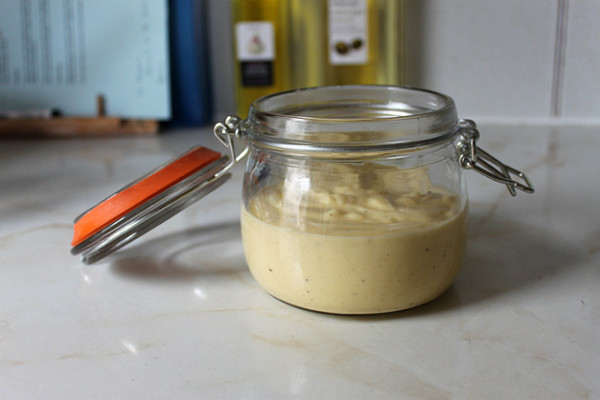
Store-bought versions of mayo have vital enzymes destroyed through pasteurization. Whey added to mayo promotes lacto-fermentation, thus augmenting enzyme content and increasing shelf life of the condiment. Commercially prepared sauces and condiments (just look at the ingredients) contain neurotoxic additives to make them palatable – MSG, hydrolyzed vegetable protein – often labeled as “natural flavorings”.
Fermented foods: Kefir
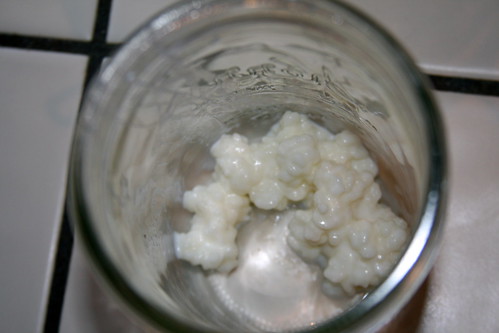
Kefir is believed to have its origins in the Caucasian mountains of the former USSR. Since then, it has become a popular food and drink in Russia, in Eastern Europe and in many parts of the world. How is kefir different than yogurt? Both kefir and yogurt are cultured milk products. Kefir has the advantage because it actually colonizes the gastro-intestinal tract. Yogurts merely have transient bacteria that provide food for the good bacteria that live in the intestinal tract. Kefir has a long list of symbiotic-type naturally-occurring beneficial bacteria and yeasts – about 35 of them – a great advantage over the laboratory-grown bacteria for yogurt which has only 1 strain to about 5 strains of bacteria or store bought kefir which only contains 10 strains. Several beneficial bacteria and yeasts found in kefir that flush out destructive pathogenic yeasts in our body are not present in yogurt. I will explore more about kefir in the second installment of this series: ‘what are fermented foods?’
So what are fermented foods sources?
Thankfully you can buy some fermented foods these days from local small producers. In Austin, you can buy sauerkraut and other fermented vegetables at the Farmer’s Market and even some commercial retail stores like Whole Foods and the People’s RX pharmacy. You can purchase kefir at the grocery store but I personally wouldn’t recommend that over making it yourself and I will explain why in the next installment of this series: ‘what are fermented foods?’ And while I have not seen commercially available fermented condiments, making homemade fermented mayo and ketchup is fairly easy and you can make larger batches as they last for a few months.
Back to our original question: What are fermented foods and are they beneficial?
The conclusion is clear. Fermented foods are highly beneficial. Fermented foods are traditional, natural and provide us with the probiotics and enzymes we need to function.
Here are some places I trust to buy starters for fermented foods.
Photo credit: shutterfool, on flickr, I Believe I Can Fry, on flickr, IMakeGuernsey, on flickr , cheeseslave, on flickr
This post is featured in Fat Tuesday, Monday Mania, Real Food Wednesday, Fresh Bites Friday, Freaky Friday, Fill Those Jars Friday, Whole Food Friday, Sunday School, Fight Back Friday, Traditional Tuesday,
See post number 2 – Why I Love Kefir and What Are Kefir Grains?

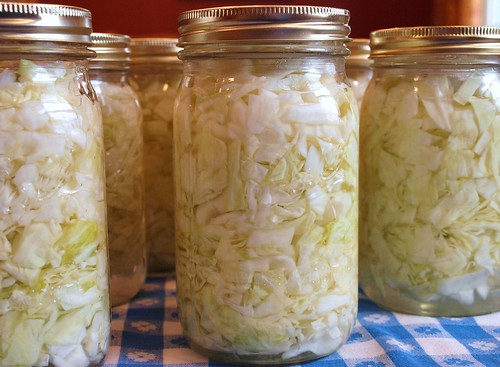


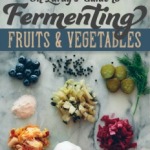






Super read! You’re a natural.
I got some grated carrots on this morning, and recently completed ketchup and pickled okra. Am finding the craving for some of the ‘kraut I’ve been buying from Straight from the Vine and will certainly make some myself when cabbage is back at the market!
Thanks for all the good tips.
Thank you Jill! Awesome! I can’t wait to hear how the carrots turn out!
GREAT post Lindsey…excited to read the next installment. LOVE fermented foods but am always afraid to make them myself as I’m afraid they will become rotten & I’ll feed them to my family (I would not feel so bad if I did it to myself 🙂 and not know. Any advice???
Thanks Ashleigh! I started off just doing the simple recipes in Nourishing Traditions using a regular mason jar and lid. I thought all was well and did this for months until I read this Sauerkraut Savior post from Nourishing Treasures. It is long but worth the read. She basically tested (with a microscope!) all the various vessels and fermentation times and posted her results. I ended up buying these Fido jars because of her post and have gotten much better results. I will post in the next few days my recipe for sauerkraut based in my research. I hope you like it!
Phew . . . lots of great info here! I love fermenting. Currently making ferments like crazy to get the last of my garden goodies stored. Today I am working on fermenting applesauce for the first time. Thinks I am going to add in some raspberries to add back some enzymes that were cooked out of the apples. 🙂
Thanks! I am glad you enjoyed it!
Wonderful article! Looking forward to the second installment!
Ok so I know this is a dumb question so bear with me I am Kinda new to this Healthy food thing, SOOOOOO, religiously I cannot consume alcohol, when does fermentation produce alcohol? how would I be able to tell if it were fermented too much or not enough?
I can’t tell you how thrilled I was to discover your blog this morning- and then to find out you live in my town?! Wonderful! Thanks so much for all of this great information!
So glad you love it!
Yay fermentation!
I’m really new to the whole fermented food thing…does this help with stomach problems due to lactose intolerance?
It should! Get experimenting – you will LOVE it!
I enjoyed this article except for the statement (lie) in the quote which says `all life has evolved from bacteria’. We didn’t evolve, we were created by God.
Hello,
Thank you for this post. I am interested in learning about safe ways of fermenting and the health benefits.
I am currently part of a home made organic food exchange group. I have made sauerkraut , sour pickles and citrus ginger beet kavas. I am excited and a little nervous to start my new venture Kombucha! I am also interested in producing my fermented foods for distribution.
Any advice would be greatly appreciated.
Happy Fermenting! Jubilee
Great read! I am just ready to start my first Kefir batch, I’m very excited, but am having trouble finding any guidance on how many Kefir grains to use. If I am starting with 1/2 gallon container, any idea how many tablespoons of grains I should use to get going?
It really depends on the conditions in your kitchen but I would maybe try 2 Tbsp.
I am not ready to start making my own fermented veggies, but love the taste. I eat sauerkraut daily, a German brand from the grocery store that is only cabbage and salt. Do you have any recommendations for purchasing fermented foods? Any brands that you prefer, or would feed to your family? Thanks!
Bubbies brand is properly fermented! I also know of local brands but I am not local to you. Just look for the bottle to say raw and fermented. Otherwise it is pasteurized and/or boiled.
Are Ba Tampte pickles as healthy as home-fermented ones?
I am sorry – I have never heard of those. Are they a local brand?
Thank you so much, for going through the effort and work to make all these wonderful things on your website available to everyone. I so appreciate this website and find it to be a great resource for my own health journey. I do however seem to have an issue with the link you posted, that talks about “getting starters from websites you trust” Would you mind posting that again by chance? Every time I click on it, it takes me to another post, that talks about “school lunches” I would very much appreciate that 🙂 Thank you!
I loved reading this article…..I am going to start by trying to do the kefir myself at home. Then I think I will move onto the sauerkraut. Everything you write is so helpful & very interesting. Wish me luck 🙂